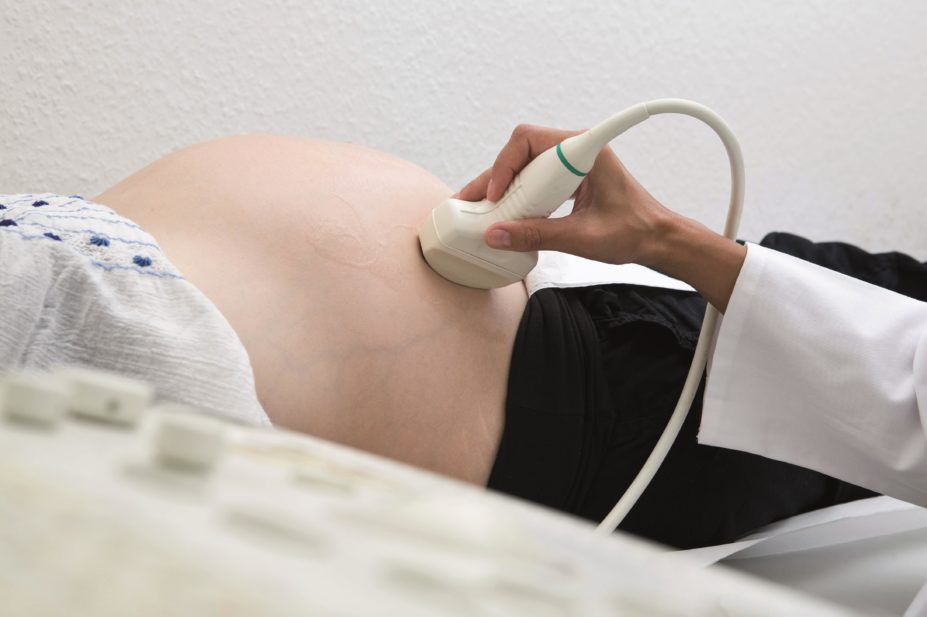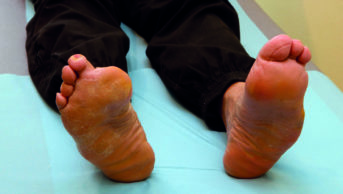
Shotshop GmbH / Alamy
A slightly increased risk of epilepsy or cerebral palsy for babies whose mothers take macrolide antibiotics, such as erythromycin and clarithromycin, during pregnancy has been found in a study by researchers from the UCL Institute of Child Health (ICH) in London.
Its lead author points out that the harm caused by infection is much more significant than the low risk posed by antibiotics, but says the findings add weight to concerns over this group of antibiotics and that it is worth considering alternatives.
“If you have an infection, take the antibiotics,” says Ruth Gilbert, professor of clinical epidemiology at ICH. “But on a population basis, we need to consider whether we should recommend alternatives.”
The UCL study, published in PLOS One
[1]
on 25 March 2015, follows evidence of harm associated with prenatal antibiotics provided by a single large trial (n>4,000) of prophylactic antibiotics for women in preterm labour[2]
. The authors of the UCL study, led by Gilbert, have determined the risk of cerebral palsy or epilepsy in children whose mothers were prescribed antibiotics during pregnancy using a cohort of 195,909 women. Children were followed from birth to a median of 3.6 years.
After considering confounding factors, the researchers found no association between mothers who had been prescribed any antibiotic and cerebral palsy or epilepsy. They did find, however, a slightly increased risk of cerebral palsy or epilepsy in the children of mothers who had been prescribed macrolides compared with penicillins. The incidence of cerebral palsy or epilepsy in children whose mothers were prescribed macrolides was 254.6 per 100,000 child-years-at-risk, compared with 143.6 in children whose mothers were prescribed penicillin.
The Medicines and Healthcare products Regulatory Agency (MHRA), which regulates medicines in the UK, has been quick to dispel any fears the data might provoke.
“The suggestion of a risk with the use of macrolide antibiotics during pregnancy should be treated with great caution,” warns June Raine, the agency’s director of vigilance and risk management of medicines. “The conclusion is based on small numbers and incomplete data such as information on the type and seriousness of the infection. The MHRA has sought independent expert advice which confirms that the study is insufficient to suggest that use of macrolides in pregnancy is associated with a particular risk.”
Gilbert says Raine’s response to the paper was to be expected if it were considered in isolation, but that the study should be viewed in context.
“There is now a large body of evidence of adverse effects of macrolides in different populations, during pregnancy and in adults,” says Gilbert. “There are three very large database studies in adults showing an association between macrolides and cardiac deaths and cardiac events. Very rare, low risk, but still there.”
The latest database study, a direct comparison between penicillins and clarithromycin, found a significantly increased risk of cardiac death associated with clarithromycin[3]
. In 2005, a Swedish study reported a link between erythromycin therapy in pregnant women and cardiovascular malformations in infants[4]
, leading several Scandinavian countries to recommend against prescribing the drug to pregnant women.
“There’s an accumulation of signals here that need to be looked at by a medicines regulator and by people who write the guidelines,” says Gilbert. The question is whether the evidence is strong enough for people to be informed about it, she says, particularly since there are clearly suitable alternative treatments.
References
[1] Meerhaus WM, Peteren I & Gilbert R. Association between antibiotic prescribing in pregnancy and cerebral palsy or epilepsy in children born at term: a cohort study using the health improvement network. PLOS ONE 2015. doi:10.1371/journal.pone.0122034.
[2] Kenyon S, Pike K, Jones DR et al. Childhood outcomes after prescription of antibiotics to pregnant women with spontaneous preterm labour: 7-year follow-up of the OR-ACLE II trial. The Lancet 2008;372:1319-1327.
[3] Svanström H, Pasternak B & Hviid A. Use of clarithromycin and roxithromycin and risk of cardiac death: cohort study. BMJ 2014;349:g4930. doi: 10.1136/bmj.g4930.
[4] Källén BA, Otterblad Olausson P & Danielsson BR. Is erythromycin therapy teratogenic in humans? Reproductive Toxicology 2005;20(2):209-214.


